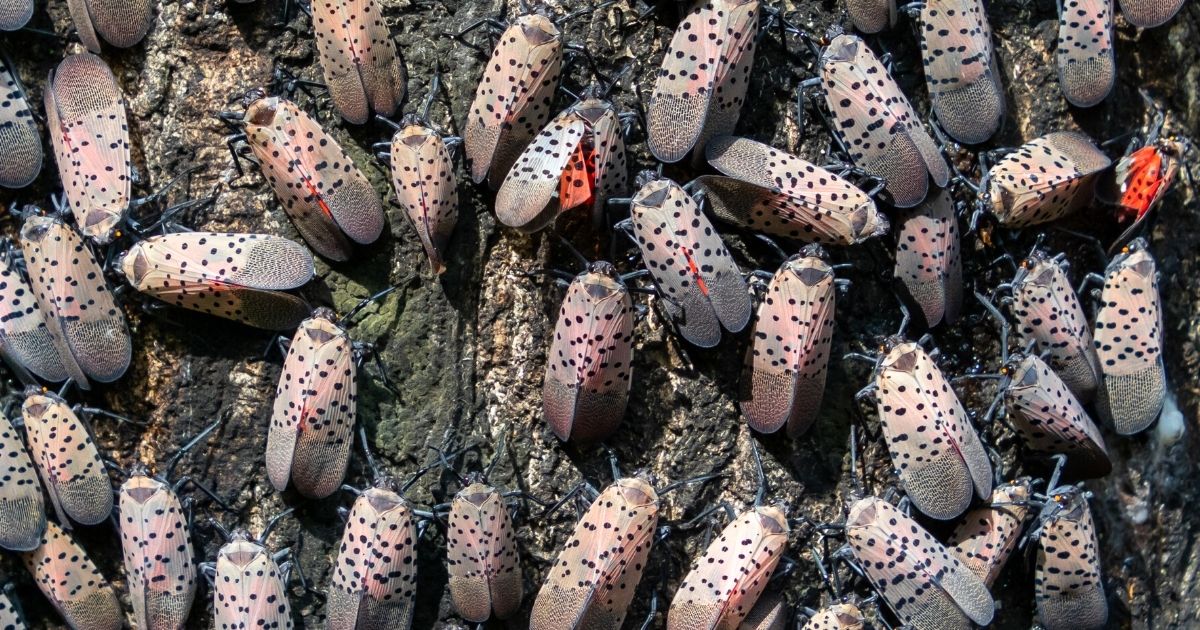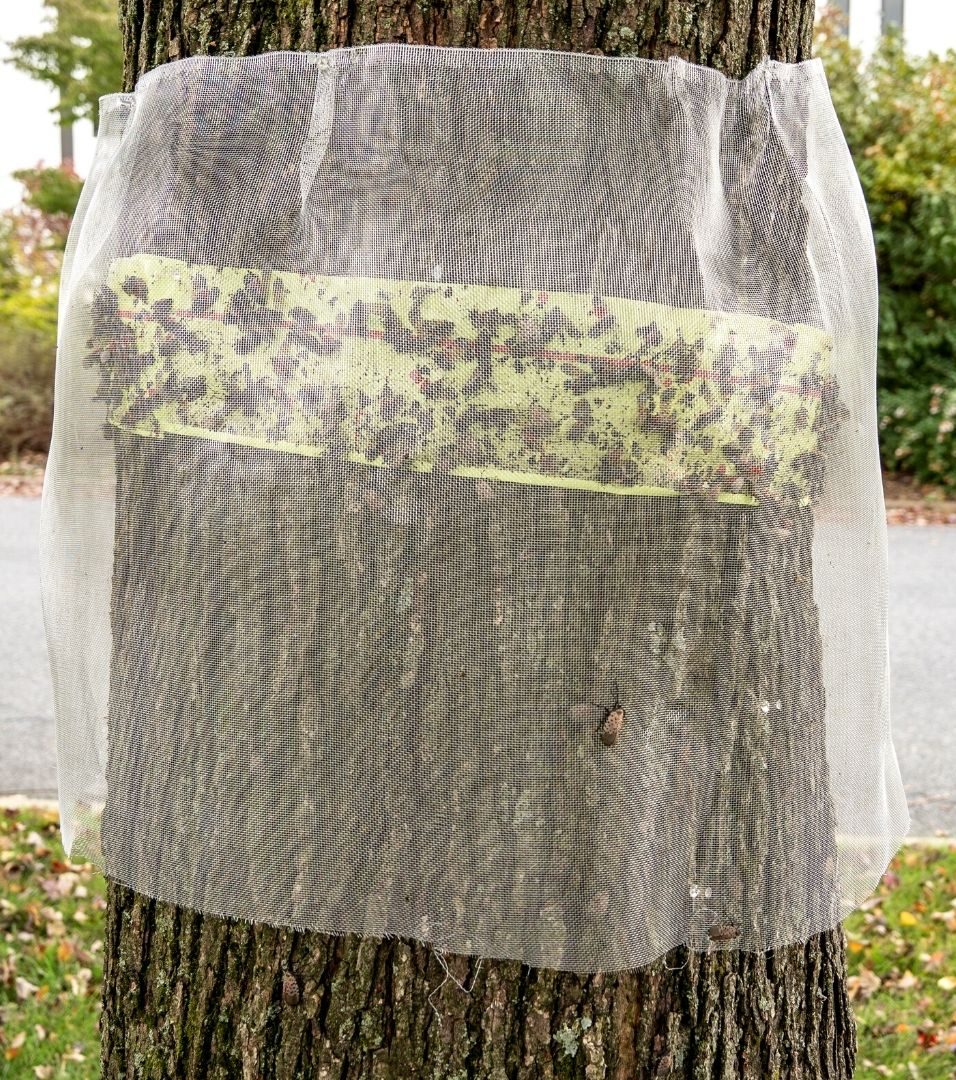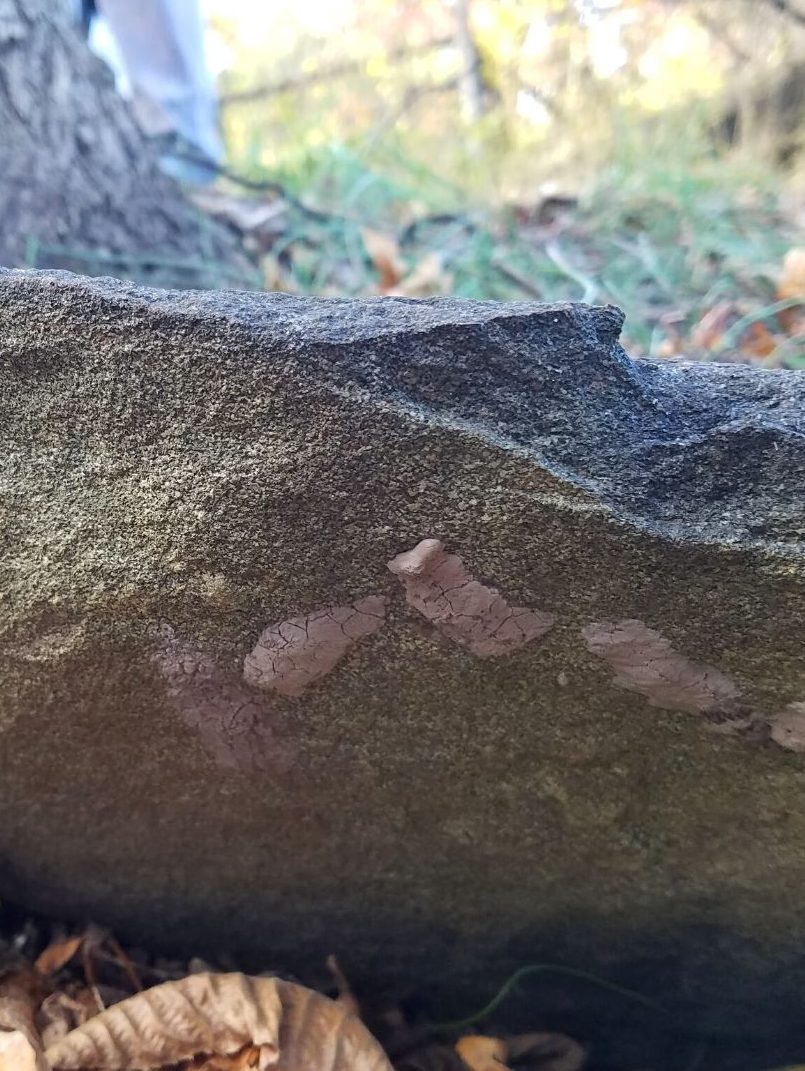
Category: Cooperative Extension

Spotted Lanternfly Management for Delaware Homeowners
September 15, 2021 Written by Katie Young and Brian Kunkel
(Updated March 2023)*
If you live in northern Delaware, you have, by now, seen a new insect hopping and flying about — the spotted lanternfly. Although vibrant and beautiful, these little critters are causing mayhem for homeowners and farmers alike. Here’s what you can do.
A party in your backyard
Spotted lanternflies can kill or cause significant problems for fruit crops, grapevines and hops. They have not, however, been demonstrated to kill trees or shrubs. But that doesn’t mean Delaware’s homeowners are out of the woods.
The insects’ feeding may cause weeping wounds on various host trees, including tree-of-heaven grapes, apples, stone fruits, walnuts, willows and maples. The sap from these wounds, in conjunction with an excretion from the lanternfly itself — politely referred to as “honeydew” — leaves a greyish or blackish sticky trail that can attract ants and stinging insects such as wasps to your backyard.
In the fall, their greyish-brown egg masses may be laid on host tree trunks and branches, causing branch dieback or wilting.
Management options
Spring, summer and fall
In the late spring, summer and fall, you have a few options to control the spotted lanternflies in the nymphal and adult stages.
From mid-April through July, nymphs are present before transforming into adults in late July and August. Mating and laying egg masses begin in September.*

- Choose insecticidal soap: You’ll have to hit the lanternflies directly to kill them, but insecticidal soap can be an effective and less broadly toxic form of control. It’s best to avoid hitting flowers directly with the spray as it may cause burn on the petals.
- Use broad-spectrum insecticides. Broad-spectrum insecticides, specifically those that contain bifenthrin have two benefits: they kill on contact with toxicity effects that can last about two weeks and wash away in the rain. It is important to note, however, that they are toxic to most aquatic organisms and insects — the good, the bad and the ugly. We urge the cautious and conservative use of these insecticides to help #SaveTheBees and other beneficial insects.
- Apply systemics. Insecticides can be applied as soil drenches any time after the plants have bloomed. These systemics make plants toxic to the insects that eat them. However, research is occurring to see what impact these systemics have on pollinators, so they should be used sparingly with caution.
- Use circle traps. Directions on how to make one are available on the DDA website. Please note, it is no longer advised to use sticky tree bands for SLF maintenance.*
- Call an expert. If you have a particularly tricky situation or large infestation, it may be time to talk to an exterminator who can help you develop a game plan to tackle your specific problem.
- Check your vehicles, outdoor equipment, boats, lumber and firewood. Each of these are common surfaces that transport lanternflies to new areas. If you are in a quarantined area, please be considerate to check for lanternflies and their egg masses when traveling. If camping in a quarantined area, consider going through a car wash before returning home, lest you take the party back to your yard!
Winter and spring
In the winter and early spring, the news is good. It’s even simpler to manage spotted lanternflies. If you’re feeling overwhelmed with managing this pest in your yard, we recommend starting here.
Mating and laying egg masses begin in September and is completed by December. From the first hatch until hard frosts kill off adult spotted lanternfly, human-mediated dispersal is critical.*

Remove their eggs from all outdoor surfaces. In winter and early spring, the best thing you can do is look for spotted lanternfly eggs. But here’s the catch; they’re notoriously difficult to notice — good for the insects, not so good for us.
Spotted lanternfly eggs look like a simple smudge of brownish-grey dirt, several inches in length and an inch or two wide. These will begin to appear in late fall on common outdoor surfaces like trees, pavement and yes, even your lawn furniture. Just underneath this top layer of “dirt” sit several rows of eggs, all in a line. For this reason, late fall through early spring is an important time for lanternfly management. By removing a single egg case “smudge,” you are destroying the eggs of 30-50* potential lanternflies and helping reduce the population without much work.
To destroy the egg cases, simply take a scraping object — credit cards and ice scrapers work just fine — and scrape the entire egg mass into a container with rubbing alcohol. This ensures that no eggs survive removal. If you have nothing to scrape an egg mass into, the best thing is to smoosh and then scrape the egg mass to destroy all the individual eggs.* So as you're out and about in your yard as the months turn cold, save yourself some time, effort and money next summer by preventing the next generation of lanternflies from even hatching!
Spray egg masses with the dormant rate of horticultural oil. This will reduce the number of egg masses that hatch in the Spring. Horticultural oil can be found at your local lawn and garden center.
Managing spotted lanternflies (Winter and Spring)
Youtube video on removing SLF eggs from surfaces in winter: youtube.com/watch?v=PbXYQR0oQVw
When in doubt
Have a question about spotted lanternflies? Let us know! Cooperative Extension is here to help connect you with expert assistance you need. Get started by submitting a question through our Ask Extension portal.
